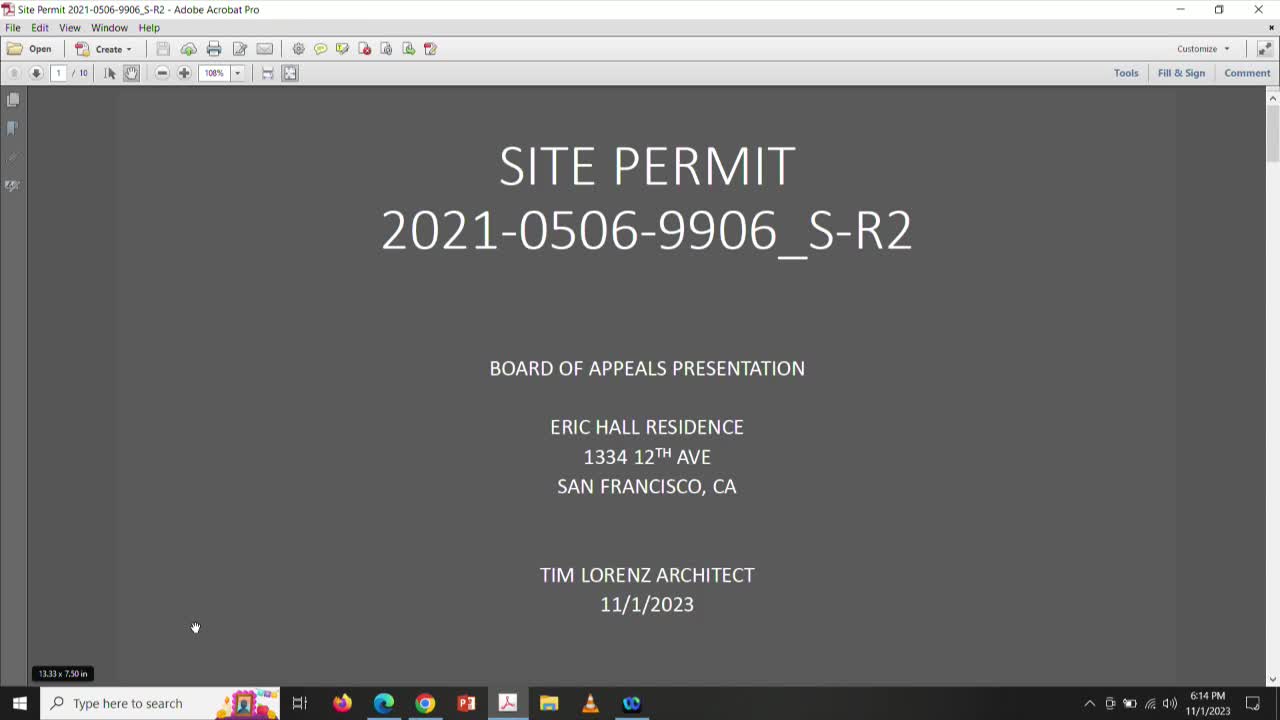Planning Commission approves residential development adjustments after neighbor consultations
November 01, 2023 | San Francisco City, San Francisco County, California
This article was created by AI summarizing key points discussed. AI makes mistakes, so for full details and context, please refer to the video of the full meeting. Please report any errors so we can fix them. Report an error »

During a recent San Francisco City meeting, a significant discussion unfolded regarding architectural modifications aimed at improving neighborhood aesthetics and community relations. The focus was on a proposed building project that has sparked dialogue among city planners, architects, and local residents.
Key recommendations were made to adjust the design of the upper floors and setbacks of the building. The planning staff highlighted three main options for the project: setting back the upper floors, adjusting the sides of the deck, and incorporating a lattice feature. These changes were presented as a means to enhance the visual appeal and compatibility of the new structure with its surroundings.
David Winslow, a staff member involved in the planning process, noted that a private meeting was held with neighbors to address concerns and work towards a resolution. This collaborative approach appears to have yielded positive results, as the planning commission unanimously approved the project with a 6-0 vote after two meetings.
The meeting also featured a detailed review of side-by-side drawings that illustrated the proposed changes, including dimensions and setbacks. Winslow emphasized the importance of these adjustments, particularly the revised second-floor design that aligns with neighboring structures, ensuring a harmonious integration into the community.
As the city moves forward with this project, the emphasis on community engagement and thoughtful design reflects a commitment to balancing development with the needs and preferences of local residents. The anticipated outcomes of these discussions are expected to foster a more congenial relationship between developers and the community, paving the way for future projects in San Francisco.
Key recommendations were made to adjust the design of the upper floors and setbacks of the building. The planning staff highlighted three main options for the project: setting back the upper floors, adjusting the sides of the deck, and incorporating a lattice feature. These changes were presented as a means to enhance the visual appeal and compatibility of the new structure with its surroundings.
David Winslow, a staff member involved in the planning process, noted that a private meeting was held with neighbors to address concerns and work towards a resolution. This collaborative approach appears to have yielded positive results, as the planning commission unanimously approved the project with a 6-0 vote after two meetings.
The meeting also featured a detailed review of side-by-side drawings that illustrated the proposed changes, including dimensions and setbacks. Winslow emphasized the importance of these adjustments, particularly the revised second-floor design that aligns with neighboring structures, ensuring a harmonious integration into the community.
As the city moves forward with this project, the emphasis on community engagement and thoughtful design reflects a commitment to balancing development with the needs and preferences of local residents. The anticipated outcomes of these discussions are expected to foster a more congenial relationship between developers and the community, paving the way for future projects in San Francisco.
Don't Miss a Word: See the Full Meeting!
Go beyond summaries. Unlock every video, transcript, and key insight with a Founder Membership.
✓
Get instant access to full meeting videos
✓
Search and clip any phrase from complete transcripts
✓
Receive AI-powered summaries & custom alerts
✓
Enjoy lifetime, unrestricted access to government data
30-day money-back guarantee

